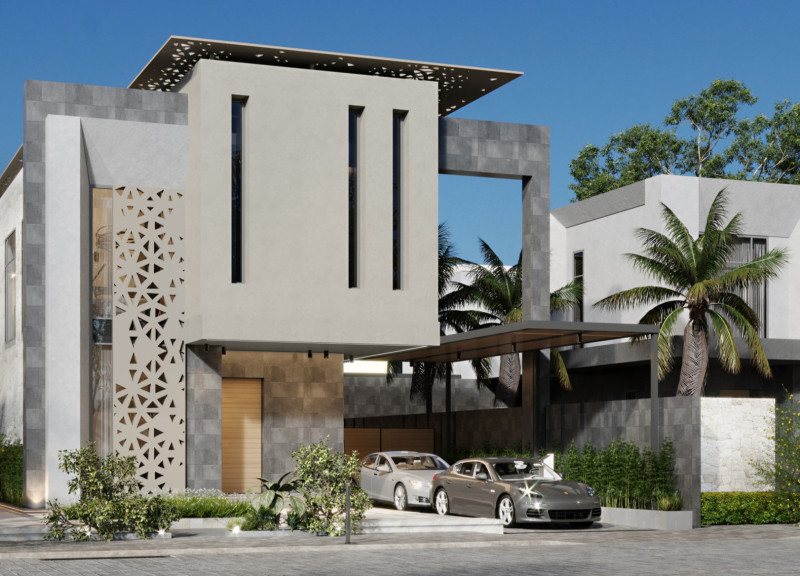5 key facts about this project
At first glance, the design reveals a contemporary style that is both inviting and functional. The building's façade employs a mix of natural materials, which contributes to an organic feel that encourages interaction with the landscape. Materials such as locally-sourced stone, sustainably harvested wood, and expansive glass elements are prominent throughout the structure, supporting an ethos of sustainability and environmental consciousness. These choices not only enhance the aesthetic appeal of the project but also serve practical purposes, such as energy efficiency and weather resistance.
One of the notable aspects of this project is its multifunctional space allocation. It features various areas including open communal spaces that foster collaboration and creativity, along with more private zones for individual activities. This intentional layout is a key strength, enabling versatility that can accommodate diverse functions, from social gatherings to focused work environments. The design encourages a sense of community while also providing the necessary privacy for different activities to coexist seamlessly.
The architectural design incorporates extensive natural light through large windows and skylights, which is not only a design choice but also a functional element that promotes well-being. The light-filled interiors are complemented by an open floor plan that enhances the sense of spaciousness and ease of movement throughout the space. This connection between indoor and outdoor environments is further enhanced by landscaped areas that surround the building, promoting a healthy environment and encouraging natural ventilation.
From a design perspective, the project showcases unique approaches to spatial organization. The use of modular elements reflects a forward-thinking philosophy, allowing for potential future alterations or expansions. This adaptability is an important consideration in modern architecture, acknowledging the changing needs of communities over time. The integration of eco-friendly technologies, including rainwater harvesting systems and solar panels, further emphasizes the commitment to sustainability, setting a standard for future architectural endeavors.
Attention to detail is apparent in all facets of the project. Custom fixtures and furnishings align with the overall design language, creating a cohesive experience that extends from the exterior to the interior. The choice of colors and textures is deliberately curated to foster a warm and welcoming atmosphere, steering clear of overly sterile designs often seen in contemporary architecture.
In conclusion, this architectural project stands as a testament to thoughtful design that prioritizes user experience, sustainability, and community connection. As viewers delve deeper into the project presentation, exploring the architectural plans, sections, and designs, they will find a compelling narrative that reflects the vision and ideas that brought this project to fruition. For those interested in the nuances of modern architecture, this project serves as an excellent case study in successful design integration and community-oriented planning.


























